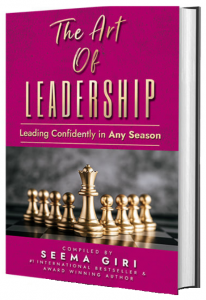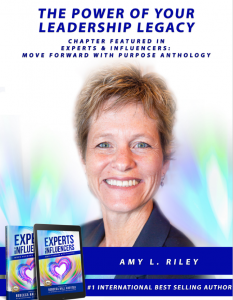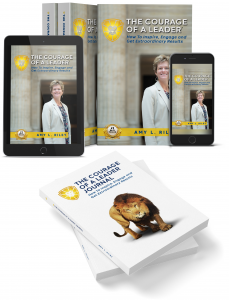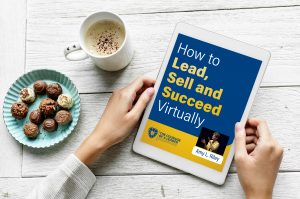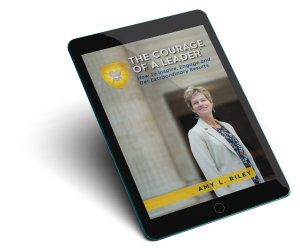My guest today, Kim Becker, is the owner and operator of the San Diego International Airport, joins us to day to talk about culture at the airport. It’s infiltrating their conversations, their meetings and how they’re thinking about and approaching their work.
Kim is very intentional about calling their efforts a process, not a program. They are taking their time with this process, giving their most vital mindsets the focus they deserve and involving all levels of leadership in new ways. Tune in to learn how they’re doing it and the difference it’s making. It’s powerful!
About the Guest:
Kimberly J. Becker is President and CEO of San Diego County Regional Airport Authority, the owner and operator of San Diego International Airport (SAN). Ms. Becker is responsible for fiscal management and operational oversight of the San Diego International Airport. She has been in the role since 2017, overseeing several capital improvement projects including the $3 billion New T1 program that will replace Terminal 1 with a larger, more efficient facility and other improvements that enhance the airport experience.
Before joining the Airport Authority, she was the Director of Aviation for Mineta San José International Airport (SJC) and held operations and environmental positions at Lockheed Air Terminal, now Hollywood Burbank Airport (BUR) in California, and Teterboro Airport (TEB) in New Jersey.
Under her leadership, SAN has been recognized for its environmental and sustainability efforts, including being named the second-ever carbon neutral airport in North America. She has been named “Woman of the Year” by the San Diego Chapter of Advancing Women in Transportation and “CEO of the Year, Government” by the San Diego Business Journal.
About the Host:
Amy L. Riley is an internationally renowned speaker, author and consultant. She has over 2 decades of experience developing leaders at all levels. Her clients include Cisco Systems, Deloitte and Barclays.
As a trusted leadership coach and consultant, Amy has worked with hundreds of leaders one-on-one, and thousands more as part of a group, to fully step into their leadership, create amazing teams and achieve extraordinary results.
Amy’s most popular keynote speeches are:
The Courage of a Leader: The Power of a Leadership Legacy
The Courage of a Leader: Create a Competitive Advantage with Sustainable, Results-Producing Cross-System Collaboration
The Courage of a Leader: Accelerate Trust with Your Team, Customers and Community
The Courage of a Leader: How to Build a Happy and Successful Hybrid Team
Her new book is a #1 international best-seller and is entitled, The Courage of a Leader: How to Inspire, Engage and Get Extraordinary Results.
https://www.linkedin.com/in/amyshoopriley/
Resource mentioned in the episode
The Inspire Your Team assessment (the courage assessment): https://courageofaleader.com/inspireyourteam/
Thanks for listening!
Thanks so much for listening to The Courage of a Leader podcast! If you got inspired and/or got valuable leadership techniques you can use from this episode and think that others could benefit from listening, please share using the social media buttons on this page.
Do you have questions or feedback about this episode? Leave a comment in the section below!
Subscribe to the podcast
If you would like to get automatic updates of new The Courage of a Leader podcast episodes, you can subscribe to the podcast on Apple Podcasts. You can also subscribe in your favorite podcast app.
Leave us an Apple Podcasts review
Ratings and reviews from our listeners are extremely valuable to us and greatly appreciated. They help our podcast rank higher on Apple Podcasts, which helps us ignite The Courage of a Leader in more leaders! Please take a minute and leave an honest review on Apple Podcasts.
Teaser for next episode
Next up will be my guest episode with Kim-Adele Randall. You’ll appreciate the way that she thinks about and cares for people in difficult situations. She shares so much transformative guidance in the upcoming episode: Authentic Achievements: How to Gracefully Lead Through Emotional Challenges.
Transcript
My guest today Kim Becker is the owner and operator of the San Diego International Airport. And they are talking about culture at the airport. It's infiltrating their conversations, their meetings, and how they're thinking about and approaching so many aspects of their work. I'm glad you're here to learn how they're doing it, and the difference that it's making.
Amy Riley:Welcome to the Courage of a Leader podcast. This is where you hear real life stories of top leaders achieving extraordinary results. And you get practical advice and techniques, you can immediately apply for your own success. This is where you will get inspired. And take bold, courageous action. I am so glad you can join us. I'm your host, Amy Riley. Now, are you ready to step into the full power of your leadership and achieve the results you care about most? Let's ignite the Courage of a Leader.
Amy Riley:Kim, I know that you at the San Diego airport have embarked on a formal journey, right a process that you're working through to intentionally cultivate the culture that you desire. Can you tell us why? Why was that endeavor launched? What was the purpose? What was the goal? Why did we start this?
Kimberly Becker:Thank you, we realize we are coming out of one of the most disruptive periods of our our history, not only here, locally, nationally, globally. And as a result of that the work that we're doing now is very different than before the pandemic and how we're doing that work is different. And at the same time, we were checking on a major project at the airport to rebuild a terminal on Create roadways and the new infrastructure. And and all that together just really made me look at it to say that we're not who we were before. And we really have to strategically, make sure that we're on the same page and rebuild that sense of team, that sense of camaraderie, and really create a platform for the team to succeed and have either adapting to that new reality that we're working in. And so I really started with a leadership team, and then it evolved from there. And because I realized you can't just work through the leadership, you really have to involve the entire organization.
Amy Riley:Yes, that is great, Kim, because I think so many people when there's disruption, they don't think, Okay, this is the great opportunity to create exactly what we want. Let's talk about this. Let's get the camaraderie. Let's talk about like, okay, things have changed. How do we work? had so many people coming to me in that time saying, how do we get back to the culture that that we used to have? Right, but you're looking at how do we Okay, here's the situation? How do we intentionally create inside of it?
Kimberly Becker:Yeah, I thought about it as an incredible opportunity to grow because we are we are going through so much change, not only through the pandemic, just the the actual facility, we're even moving to a brand new building. And we had the opportunity to think about, hey, do we want to create something different there? Do we want to, you know, set up the building to facilitate some of this change as well. So we've got every opportunity in front of us to build that platform so that we we can grow as an organization.
Amy Riley:Interesting capitalizing on all of that, what has been the most impactful activity or effort inside of the process you've embarked on?
Kimberly Becker:I believe, I really think that, for me, what's most impactful is is seeing some of the results come to life. We have really changed some of the way we go about working. We recognize we have you know, our executive leadership team, then we had our directors. Now we have a manager level. And I recognized and, and honestly the directors and executive team recognize that we were not working with our managers as managers, and we were not giving them the autonomy that they needed to do their job. Are we we're not bringing them into discussions as fully as they really needed to be. And so we started to engage that level of the organization. And to see them come to life as a result of this. And the, I guess, the voice that they had, and the Empowered how they they're empowered, powered. And what they bring to the table has just been an amazing change for the organization. And then they have the ability to take it through the rest of the organization. And I see it penetrating throughout the the entire group, and it's fun to watch. We're not there yet. But it's fun to see those changes start taking place.
Amy Riley:Yeah, absolutely. So I am hearing that this was a really emergent process, right? Like you didn't know you were going to uncover like, Hey, we're not empowering this management level in the ways that we can. Can you tell us like, what were some of the inquiries or the discussions that you had? How whorls first questions?
Kimberly Becker:Sure. I mean, it started, I took the leadership team, or were the executive leadership team away for a retreat. And I was really talking about strategy and where we're going to take, are we in line with our current strategy? Where are we going from here? And we started and I wanted to talk about the culture, you know, are we are we doing well. And we started to really focus on the culture, we define what the culture meant to us, we really created what our goals were for talking about culture. And we ended up kind of developing our own our own strengths, weaknesses, and kind of a startup culture statement. And then I realized, well, culture, you can see culture and and say, This is a new culture, you have to bring everybody along. So the next retreat, bring in the director group, and then then we decided, okay, well, let's take it to the manager level. And then the really, I guess, the impactful part was when we all three came together, and shared our experiences, and align, see where we align, and see, there were great differences. And at the end of that, we walked away with a brand new cultural statement that really helped us focus on our G, our goals, and you know, what we're going to achieve together as an organization. So it's, it was fun, and, and we really did have different ideas about what that photo statement should be. And we were able to merge it into one wonderful overall strategy and statement.
Amy Riley:Oh, I know that that's where my curiosity went came when you were talking about okay, secular leadership, had this conversation directors had this conversation managers had this conversation. Can you give us an example, maybe something that was core and consistent through the groups, and maybe something that where there were different perspectives?
Kimberly Becker:Yeah, it was pretty fascinating, because the, how we define culture of this was fairly common, and there was some nuances between them. But when we got to the strength of our existing culture, and then the realities of our existing culture, that created quite a conversation, because for the most part, we agreed on on the strengths and, and where we stood that the organization is just such a professional organization, and very, they were already very had a lot of pride in what we do, and really wanted to be the best of the best, and they worked hard to get there. And we were already talking about belonging and trust, and just the empathy of the organization. But when we got to the realities, it was interesting, because the executive team really focused on we went pretty deep. And we said, this is where we see our concerns were when when the directors and management heard about that. They're like, Are you kidding that? That's not what we are, and there was this reaction to go to thelight. Okay.
Kimberly Becker:And so we cannot explain what we meant by some of the things that we had put on the table. And that helped a little bit. But I was I was very surprised that there was this gap and the reaction that the team saw I had to those concerns. And it wasn't about the way I looked at it. It wasn't a about the organization and today's state, it was about things that we can work on to get to that next level. So we we are very proud of the organization, but you can always improve. And these are the things that we wanted to improve on. And I think the the team felt that it was more of a well, you know, we have major concerns today, and we're not doing well. And Mary, so it was, I felt really proud of them, because they really stood up for themselves. And they were saying not better than you suggest you are we're doing something you're getting from good to great, right? Yes, yes.
Amy Riley:Yes, yes. Ah,
Kimberly Becker:it was, it was, it was eye opening. And I thought, Oh, my goodness, when do we start here? By once we once we recognize what their perspective was, and what we were really trying to share? What I think we came to an alignment done.
Amy Riley:Well, and you never would have heard from the rest of the leadership team and their perspectives on this, if they weren't reacting to some information from the executive leadership team. Right. I mean, sometimes, when I see leadership groups, trying to avoid what happened, they're like, wait, you know, like, we wouldn't want to share something that they could have some kind of possible adverse reaction to, but you have the real conversations. And if people are really having those concerns, if they're really having those thoughts, those are present in the environment, whether we're talking about them or not. But once we bring awareness to them, shine a light on to them and say, we're here to talk about this, then you can look at them and decide what to do about them. Right, and what all the different perspectives are.
Kimberly Becker:That's funny, because one of the items was we don't have enough a real conversation. The real conversation, you know, it's just hey, we do really well, we go into meetings, we talk, we have conversations in the hallway, but we really need to take that to a new level. And that's, that was the difference. It's just taking it to that next level was what we were looking for. So
Amy Riley:exciting when you're having conversations from good to great.
Kimberly Becker:Yes, exactly. Exactly. And we didn't do this. We didn't do a great job of communicating that from the very beginning. But this is what our perspective was. Yeah, yeah.
Amy Riley:im has been in the role since:Kimberly Becker:Thank you. I'm really happy to be here.
Amy Riley:Glad to have you. So it's my leadership development hat that is always on my head. I want to come back to one of the comments that you made, started to engage managers, empower them, engage them in a new way. Can you say a little bit more about that? How so how do you do that?
Kimberly Becker:One of the things we reckon licence, there wasn't enough conversation, as as an organization as the entire leadership of the organization. So we started, we always had directors meetings where I brought the directors and the executive team together. It was every other every other week. And so we started to bring the leadership team into that as well, and called it the leadership team. And that was all of the different leaders of the organization. And there, we, we talked about the cultural journey and cultivating the culture, we talked about strategy. We also talked about day to day, you know, what's happening. And we started putting hot topics on the list so that we can make sure that we all were on the same page. And then we started talking about, okay, how do we take this to the rest of the organization. And we utilize a lot of that team to really change and had these conversations. And we use the leadership meetings, as a way to coach one another on how to share this information and get it out to the entire organization, and then bring your stories back, talk about how the conversations went, and where we need to maybe tweak or go a different direction, or where we're doing well. And so having more voices at the table, just just really helped to create one of the key mindsets is being inclusive. And that started to help us evolve that as well.
Amy Riley:Yeah, so higher levels of leadership, if you will, are being more inclusive, let's get the whole management group involved here, I'm hearing access to information earlier, bringing them in to conversations, hearing perspectives of a wider group. And I love this about leadership groups coaching one another. Goodness, you can think as leaders that like I'm supposed to have all the answers for my team, right. And I'm supposed to know how to messages to my team and bring my team in. But leaders can rely on their colleagues. And
Kimberly Becker:absolutely in kind of, you know, culture you can't take, go into a corner, create a culture statement and say, show everybody else, this is your culture, we're going to act this way and behave this way. It doesn't work that way. And really creating that larger group and immediately taking it throughout the organization and involving everybody in different meetings that I am invited to, to talk to, to employee groups. We I start the meeting by talking about the cultural conversation. And we've been focusing on our mindsets. That's another area that's now that we created a set of six mindsets that we felt were really the types of we started calling them behaviors. And I'm gonna LinkedIn won't like the word behavior, because I felt like we were telling people how to act. And so I transitioned to two mindsets where, you know, these are the things that we want to keep in, in our mind as we're, we're conducting business and talking with one another. So we agreed on these six mindsets. And one of them was listening, and making sure you're actively listening. I'm really here and paying attention. And so I were going to various meetings, and I just asked people, How has it been? Because for the about two months, we focus on listening, then we're transitioning to each of the mindsets, for a couple of months to focus really focus on that. So the first one was listening, and just saying, How did it go? And people were saying, Well, I caught myself, I realized, you know, I was on a call, and I didn't have my camera on. And the next thing I know, I'm doing work at my desk, and I realized people were practicing it and they shared those stories. And, and that human factor came into it where, you know, everybody realizes, you know, we're not all 100% on at all times, and you can't be expected to be that way and to share those moments. It's just fascinating to see how it brings the group even closer together.
Amy Riley:Yes, that's that's the that's a great power, those kinds of conversations amongst the groups amongst the leadership. Kim in leadership development programs, we're often intentionally creating that, right. We have big group sessions. We share some frameworks and some concepts, we practice some stuff. But then we often have peer learning groups or learning circles or support groups, right, where you talk about what you're saying, Kim, how's it going? How does it work? Oh, I realized in practicing the listening mindset that I was multitasking during that virtual meeting, right? I wasn't practicing putting my hands on my lap and I focusing on the conversation, and then we'll have leaders at the end of programs go, I'm gonna miss this. And I'm like, you can still have this. And you This is you're not calling it a leadership development program or anything, but you're having these ongoing support conversations amongst the leaders with one another. Having no conversations,
Kimberly Becker:yeah, through this, you know, you realize it isn't something that is, as you said, a program, this is the future of how we want to interact in this organization. And it's about us, really taking ourselves to that next level, so that we can be better at our jobs. And we can be better at bringing new people to the organization and truly empowering the team to grow. And so it is not a program. And that's why we're taking it very slowly to suspend. We have six leader or six mindsets. And to spend two months on the first one, I thought, oh, gosh, are we going to? Are we going to get into those other ones? Here? Yeah, right. I'm going to go on to die. And I think it's really, we're on our second one now. And that's really stifled decision making. So we're talking about how do we make that from decisions? And what can we do to make sure that we are thinking about all the factors of a decision before you're going on? Who do you have to talk to? And what are, how quickly do you make a decision, and there's different types of decisions that you have to make. And so we're working through that. But I really like that we're being very deliberate in this process, and really bringing everybody along and getting to the point where people are comfortable. And you're, you're incorporating it into how you think every day rather than trying to pile everything in, then you lose half of it. Yes.
Amy Riley:Right. If you explore something for a couple of months, you have the chance for some of those habits, those new practices, that new way of thinking, the new mindset to really embed, it excites me because you know that you've taken the time to involve the organization in saying what so for them saying what they like and knowing that these are the six mindsets that everyone's excited and ready and know that they want to explore. So when you're exploring right now you're exploring thoughtful decision making. What size groups are you in? When you're exploring this? How many people are in this conversation at a time?
Kimberly Becker:It's not always formal? Okay, it's really being brought into everything that we're doing. So it could be a team meeting within the department. It can be you know, we just had our we call sandline, which is our basically our all hands meeting had talked about it there. We talked about it. You know, we've really tried to talk about it just in conversations. How are you doing today? Well, yeah, have you made a great decision, look at those kinds of things, listening was a little bit easier, because it was more, something very understandable, thoughtful decision making, is more of a task that you have to learn and different steps along the way. So that one's been a little bit more interesting to try. And we just really started rolling that out, to try to engage on a on a routine basis. But it really is about incorporating it into your language, and every chance that you have with a new organization. And I what I what I love is I watch people do it, I hear people talking about it, I see things that are written that have the mindsets in it or the mindset. It's just been amazing. And it's been such a fun journey so far. And we've had, we've had bumps along the way, especially in me that you get to say, What am I doing? And do I know what I'm doing? And how do I make sure we keep this thing moving along. So that we're still bringing everybody along. And they're not saying oh, just another program or process that we're going through a paddle, make it real.
Amy Riley:And what you're saying is what makes it real. For you really have every leader, every team member ready and willing to talk about it into the conference in bringing into the conversations that are already happening, the processes that are already going on. That is truly how you embed. I get excited about that, like this month and next month, right? We're talking about thoughtful decision making, and you're just exploring that at every opportunity that you get. That's how it really infiltrates right and shows up and day to day thoughts and actions.
Kimberly Becker:One of the things that we Do for, you know, traditionally people had annual evaluations, but we have coaching conversations here. And they're done on a quarterly basis. And one of the sections of the coaching conversations was behaviors. And so we modified that to say, leadership mindsets. And each time with my team, the leadership team, I asked them to focus on one of those for the quarter as well as part of their coaching conversations. So that also, they check in and throughout the organization, everybody has that as their behavior and there's no evaluation process on there. It's a coaching process. But it it makes it elevates the importance and makes sure that people understand this is this is where we want to go as an organization. And here are the benefits of doing that, aha, aha,
Amy Riley:integrating it into the processes going on ulimate cam, I want to ask so you know, not everybody listening is going to be in your position, and be able to say we are going to launch an intentionally cultivating culture, process and initiative here. So to the team leader that's out there. And you know, some things are going well, in their day to day, some some things are not on the team, what would you offer to all leaders that maybe those in the like, kind of the mid level range? What can they do with their sphere of influence to start intentionally cultivating culture?
Kimberly Becker:One of the things I thought about, and I mentioned it earlier is you can't take a leadership team and say, here's our culture, put it on the table and expect it to just happen. What I tried to do was organically create change. And I told after that first routine treat the leadership team, the executive leadership team came out of that and, and one of the things we agreed upon was the fact that they had the organization had to see a change in us, we had to start exemplifying these behaviors. And my goal was that eventually people would say, Wait a second, something's different here. But it wasn't necessarily, this is the change we're making. So I wanted to see it through example, and anybody can do that throughout the organization. And you can even do it on a personal level, people notice, and they watch. And then it starts to spread. And it's and it's a positive spread through the organization. Once we started to do that, that's when we started to really more formalize it. And the first thing that we did with these mindsets, every week, we just sent one, each of the executive leadership team members would take one of the mindsets and do this really kind of personalized description of what it meant to believe the best in people and a personal examples, and we just send it out. And we did that for six weeks in a row. And the team was like, What's going on here? And then, okay, this is what we're doing. But you slipped on stage and generated a little bit of excitement. And that was a little bit in my mind, it was risky. Well, we're doing this without giving any kind of kind of content. And it got people involved, and they liked the story. So it created that human factor with this as well.
Amy Riley:Yes. And something real and tangible, not like this theoretical thing we're going to do. So I'm hearing folks, do some of the work yourself first, right, that inquiry about, you know, Team Leader, what do you what do you want the culture on your team to be? What do you want that to look and feel like what mindsets? What practices would you engage in, and then start demonstrating that exactly right. And live people notice maybe and then you can start to share what you're doing, and then bring others in? Kim, you have shared so much great stuff with us today. I mean, first of all embarking on and allowing this to be an exploratory journey. Right, which puts you in places where like, Oh, we got to, I don't know where we're gonna arrive here. We got to figure it out from here. The inclusive nature of it, which doesn't necessarily mean bring 300 people into the conversation right from the beginning. But have your conversations and continue to widen those groups and include others. I'm hearing have the real conversations about what we want. What our current strengths and weaknesses are. Have the real conversations about how it's going. How are we doing with the line, for example, is mindset. I love the concept of the mindset. Right? Because it's a mindset. And then, you know, thoughtful decision making might look really different in my area of the organization, the airport, then another area, right? thoughtful decision making might be quick in some areas of the organization, and might be slow down and consider all bonds of stakeholders in other areas of the organization. Yes, I thought there was one more thing that I was going to say, bringing those real conversations into your day to day and into existing processes, right, because then it's not this separate thing that's happening that we forget about until we're invited to a culture specific meeting.
Kimberly Becker:And that was really critical. We took the same approach with a strategic plan. People put a strategic plan together and put on a shelf and a year later, they look and say, Oh, what, how are we doing? We bring that out, we talk about it regularly. And we have different focus areas. And we recognize that really, the strategy is going to change over time. And it really is about bringing our our entire purpose to light. That's how you do it through the strategy. But that strategy can be stalled or accelerated through the culture of the organization. And so we were able to merge that strategic thinking and the culture and actually part of our strategic plan, we modified and put a whole focus area called cultivating the culture. And so we entered, we merge the two efforts together. So again, it's it's who we are, it's how we act. It's, it's what we're doing rather than here's a program and that was really important to me.
Amy Riley:It's so inspiring, Kim, I think I was exactly right, and thinking that the courage of a leader podcast listeners needed to hear this story. Thank you so much for joining me today to share it. Really appreciate it.
Kimberly Becker:Yeah, thank you for having me. It's been a very fun process scary at times. But if anybody can change, just a little tidbit away, I'm really thrilled.
Amy Riley:I am sure that they can. Thank you, Kim.
Kimberly Becker:Thank you.
Amy Riley:Thank you for listening to the Courage of a Leader podcast. If you'd like to further explore this episode's topic, please reach out to me through the courage of a leader website at www.courageofaleader.com. I'd love to hear from you. Please take the time to leave a review on iTunes. That helps us expand our reach and get more people fully stepping into their leadership potential. Until next time, be bold and be brave because you've got the courage of a leader


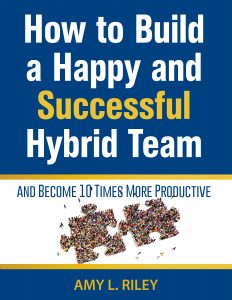
 A Summary of The Courage of a Leader® 4 Pillars
A Summary of The Courage of a Leader® 4 Pillars